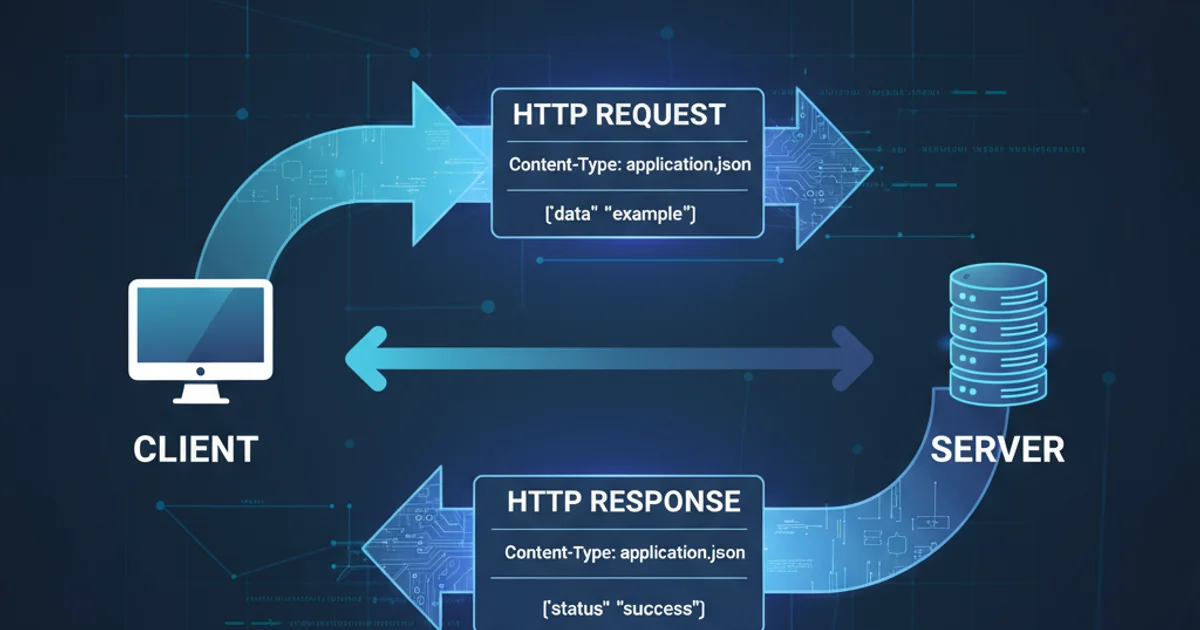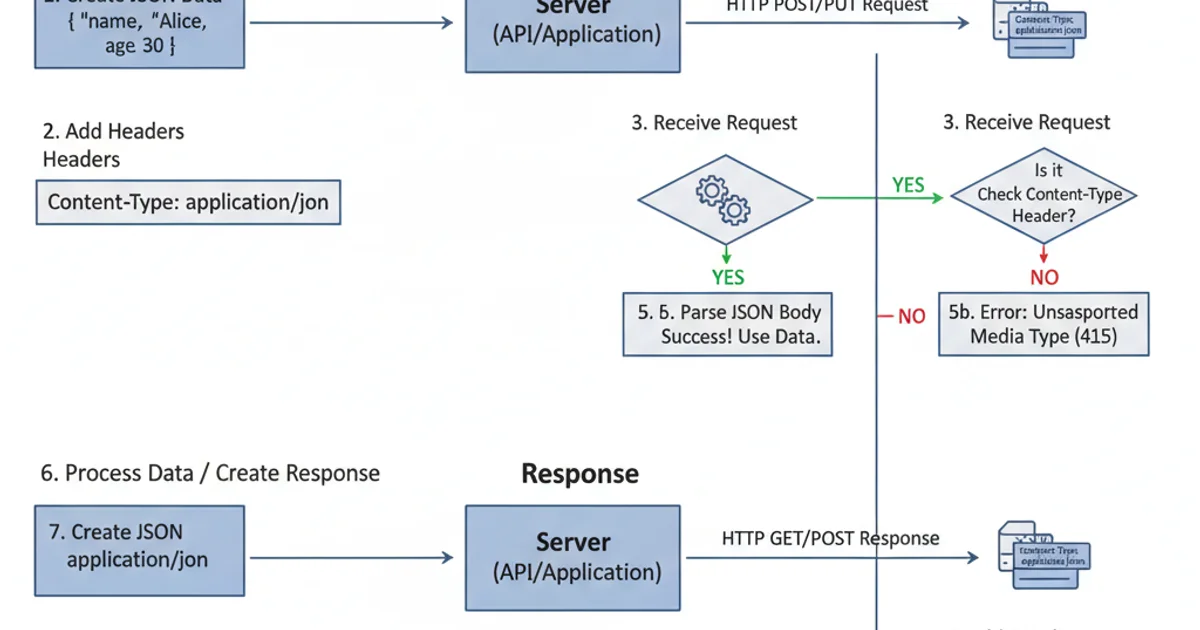HTTP Content-Type Header and JSON
Categories:
Mastering HTTP Content-Type for JSON Data

Understand the critical role of the HTTP Content-Type header when sending and receiving JSON data in web applications, with practical examples in JavaScript and PHP.
The HTTP Content-Type header is a fundamental component of web communication, informing the recipient about the media type of the message body. When dealing with JSON (JavaScript Object Notation) data, correctly setting this header is crucial for proper parsing and interpretation by both clients and servers. This article delves into why Content-Type: application/json is essential, how it's used in various scenarios, and provides practical examples in JavaScript and PHP.
The Significance of Content-Type: application/json
When an HTTP request or response carries a JSON payload, the Content-Type header should be set to application/json. This standard MIME type explicitly tells the receiving application that the body contains JSON formatted data. Without this header, or with an incorrect one, the recipient might misinterpret the data, leading to parsing errors, unexpected behavior, or security vulnerabilities.
sequenceDiagram
participant Client
participant Server
Client->>Server: POST /api/data
Note over Client,Server: Request with JSON payload
Client->>Server: Content-Type: application/json
Client->>Server: { "name": "Alice", "age": 30 }
Server->>Client: HTTP/1.1 200 OK
Note over Server,Client: Response with JSON payload
Server->>Client: Content-Type: application/json
Server->>Client: { "status": "success", "id": 123 }Sequence diagram illustrating client-server communication with Content-Type: application/json
For example, a web server receiving a POST request without the Content-Type: application/json header might attempt to parse the body as form-encoded data (application/x-www-form-urlencoded) or plain text, failing to extract the JSON structure. Similarly, a browser receiving a JSON response without the correct header might display the raw JSON string instead of parsing it into a JavaScript object, or even trigger a download.
Content-Type header to application/json when sending or expecting JSON data. This ensures interoperability and prevents unexpected parsing issues across different clients and servers.Sending JSON Data from the Client (JavaScript)
Modern JavaScript environments, especially browsers, provide straightforward ways to send JSON data. The fetch API is the most common method. When using fetch, you typically stringify your JavaScript object into a JSON string and set the Content-Type header manually.
const data = {
username: 'john.doe',
email: 'john.doe@example.com'
};
fetch('/api/users', {
method: 'POST',
headers: {
'Content-Type': 'application/json'
},
body: JSON.stringify(data)
})
.then(response => response.json())
.then(data => console.log('Success:', data))
.catch(error => console.error('Error:', error));
JavaScript example using fetch to send JSON data
In this example, JSON.stringify(data) converts the JavaScript object into a JSON string, and the headers object explicitly sets Content-Type to application/json. The server can then correctly parse this incoming JSON.
Receiving and Sending JSON Data on the Server (PHP)
On the server-side, PHP needs to be configured to correctly handle incoming JSON requests and to send JSON responses. For incoming requests, PHP doesn't automatically populate $_POST with JSON data; you need to read the raw input stream. For responses, you set the Content-Type header and then json_encode your PHP array or object.
<?php
header('Content-Type: application/json');
// Handle incoming JSON data
$input = file_get_contents('php://input');
$data = json_decode($input, true); // true for associative array
if ($data === null && json_last_error() !== JSON_ERROR_NONE) {
http_response_code(400);
echo json_encode(['error' => 'Invalid JSON received']);
exit();
}
// Process data (e.g., save to database)
// For demonstration, we'll just echo it back
$response = [
'status' => 'success',
'received_data' => $data,
'message' => 'Data processed successfully'
];
echo json_encode($response);
?>
PHP example for receiving and sending JSON data
In the PHP example:
header('Content-Type: application/json');is crucial for telling the client that the response body is JSON.file_get_contents('php://input')reads the raw POST body, which contains the JSON string.json_decode($input, true)parses the JSON string into a PHP associative array.json_encode($response)converts the PHP array back into a JSON string for the response.
json_decode errors using json_last_error() and json_last_error_msg() to provide meaningful error responses to the client.Common Pitfalls and Best Practices
Mismanaging the Content-Type header is a common source of bugs in web development. Here are some best practices to follow:
- Always set the header: Never assume the default
Content-Typewill be correct. Explicitly set it for both requests and responses. - Server-side parsing: Be aware that different server-side languages and frameworks handle JSON input differently. Always consult your framework's documentation for the recommended way to parse incoming JSON.
- Error handling: Implement robust error handling for JSON parsing failures on both client and server. Provide clear error messages.
- Character Encoding: While
application/jsonimplies UTF-8 encoding by default, it's good practice to ensure your data is indeed UTF-8 encoded, especially if dealing with international characters. You can explicitly add; charset=utf-8to theContent-Typeheader, though it's often redundant for JSON.

Ensuring correct JSON parsing with Content-Type header
By consistently applying Content-Type: application/json and understanding its implications, you can build more robust and interoperable web services that handle JSON data seamlessly.